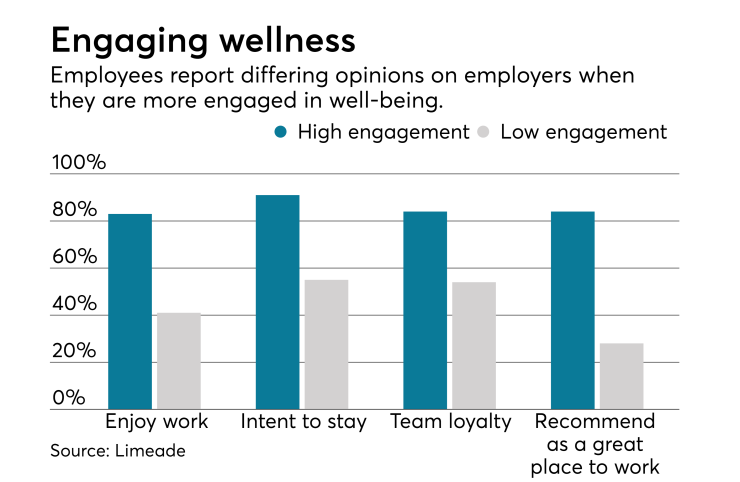That wellness program your company implemented in the last few years might be showing results.
A recent UnitedHealthcare survey found that 62% of participants in wellness programs say their productivity has improved, 56% have had fewer sick days and 30% say they had a disease detected thanks to these programs.
These results show that wellness programs can be useful and may help curb some costs associated to healthcare, according to the insurance giant, which also offers its own UnitedHealth Wellness plan.
“This is positive news about how to make healthcare more affordable,” says Rebecca Madsen, chief consumer officer of the Minnesota-based UnitedHealthcare. “This shows that these programs are working.”

The survey finds that 67% of the people surveyed reported reduced bodyweight and that 23% quit smoking or other nicotine use thanks to the program.
While weight-loss was prominent among participants, there was only a 5% difference between people on a wellness program and those who are not when it came to devoting time to health each day: 31% of those on a wellness program devote an hour each day to their health while 26% do so among the group not on wellness programs.
“The fact that an average of 29% are willing to devote an hour each day to their health means 71% are not willing to do so. The question in how to get them motivated,” says Madsen.
The survey results are motivating employers as well, says Madsen. She believes that benefits advisers should also keep in mind that 73% of employees that do not have a wellness program want them, so offering these programs could provide opportunities not only in fewer sick days but also in employee engagement.
Madsen believes employers should do more than just offer wellness programs. They can customize wellness strategy for the specific workforce by identifying the most common problems, such as high rates of smoking or obesity.
This includes incentives, which appear to work, accrdoing to Madsen. Employees who participate in the UnitedHealthcare Motion program, which encourages physical activity and uses rewards to incentivize participants, has given out $30 million so far in rewards to participants. “It doesn’t need to be tied to money,” she says, noting gift cards, health savings accounts, or even vending machines with healthy snacks are good options.
High demand
Seventy-three percent of employees without access to wellness programs would like to have them. Baby-boomers, people now between the ages of 55 and 72, lead this group, with 84% of them showing interest in such a program. “Many times, they had a health issue and they understand the importance of wellness,” says Madsen, “They don’t want to get sick and they want to be realistic about it. They want to live healthy, longer lives.”
Mindfulness, according to 89% of the respondents, has a positive impact on older employees’ health and well-being. “Physical and mental health are tied together, keeping healthy and engaged is important,” says Madsen. “We try to make sure we are looking at the whole person.”
At a time when mental health issues, the opioid abuse crisis, and the rise in the number of suicides are in the news almost daily, Madsen believes employee assistance programs to be essential and that mindfulness or meditation programs can help.





